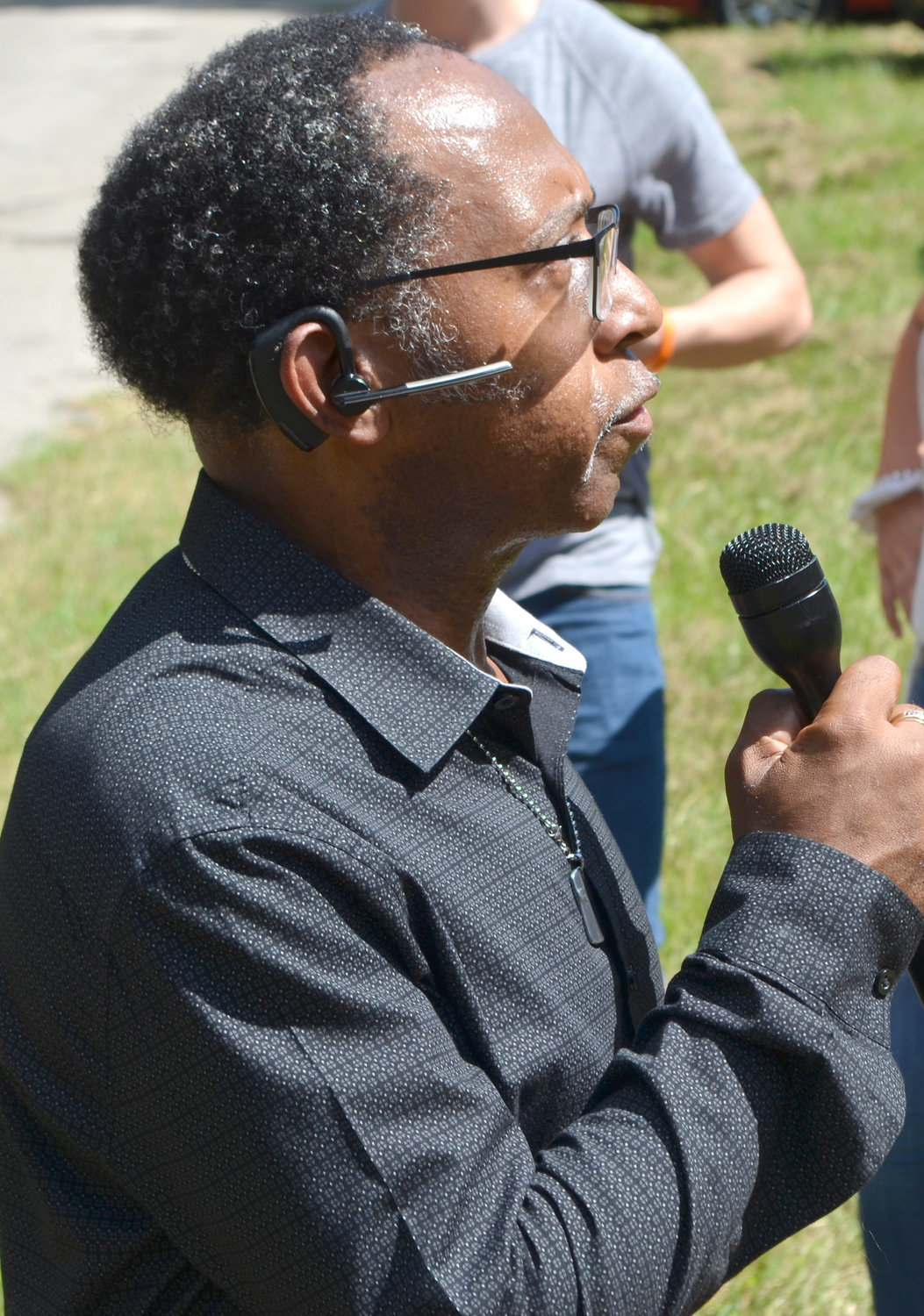R.C. Hickman historical marker dedicated
A casual observer might regard a grassy piece of land on Padgett Street in Mineola as nothing more than a vacant lot. But to all the McFarland Bears who congregated at that spot Saturday, the place seemed more like a garden of memories.
This item is available in full to subscribers.
Attention subscribers
To continue reading, you will need to either log in to your subscriber account, or purchase a new subscription.
If you are a current print subscriber, you can set up a free website account and connect your subscription to it by clicking here.
If you are a digital subscriber with an active, online-only subscription then you already have an account here. Just reset your password if you've not yet logged in to your account on this new site.
Otherwise, click here to view your options for subscribing.
Please log in to continue |
R.C. Hickman historical marker dedicated
By HANK MURPHY
editor@woodcountymonitor.com
A casual observer might regard a grassy piece of land on Padgett Street in Mineola as nothing more than a vacant lot. But to all the McFarland Bears who congregated at that spot Saturday, the place seemed more like a garden of memories.
A large crowd of former McFarland High students, their families, city and county dignitaries, historians and others met at the former site of the old Bar 20. They came together to pay tribute to Mineola native Rufus Cornelius “R.C.” Hickman, an acclaimed post-World War II newspaper and magazine photographer who documented everyday African-American life as well as the struggles and tumult of the civil rights movement.
The atmosphere was festive Saturday as old friends and classmates laughed, hugged and reminisced about bygone days at McFarland, which was only a stone’s throw from the Bar 20.
Cle Walton of the Mineola Landmark Commission said her memories of R.C. Hickman are few. “But whenever he came to town, I remember him always running around with a camera over his shoulder, and he was always moving really, really fast.”
Much of his work was published in the Dallas Star-Post, she said. Hickman also shot photos for the Dallas Express, Kansas City Call, Jet magazine, and the NAACP.
Hickman’s mother, Cora, ran the popular African-American social spot called Bar 20. It is at that vacant site that a Texas Historical Commission marker now stands.
“I don’t know of any other way to describe it other than this is hallowed ground we’re standing on today, because most of you remember the Bar 20,” Walton said in addressing the crowd of several hundred.
“For 15 cents you could get a hamburger, and for 5 cents you could get a soda,” Walton recalled “For 20 cents you could eat lunch. Of course the hamburger wasn’t on a roll or a bun; it was between two slices of Ideal or Mrs. Baird’s bread. You got everything on the hamburger whether you asked for it or not.”
For a nickel, you could play the jukebox. “So you might get a few dances before the first bell rang. But if you didn’t get back before the second bell you’d wind up in the principal’s office,” Walton said.
“Miss Cora, most of us called her Aunt Cora, she walked around…with a big switch. And if you danced too close, you got a tap on the shoulder,” recalled Walton. “I know y’all remember the adage it takes a village to raise a child, well Aunt Cora was part of that village. If you were in here, you had to do what was right.”
Walton said she looked back at photos from her teenage years and saw a picture of her in her first formal dress sown by her classmate Martha Robertson’s grandmother.
“I cherished it, because to me it was like something from Neiman Marcus; that’s how dear to me it was. And where was the formal then? At the Bar 20. There was no gymnasium, no auditorium, everything was held at the Bar 20.”
Jim Phillips, co-chairman of the Landmark Commission and past leader of Mineola’s Junior Historians, said of Hickman and the historical designation: “We are proud of his achievements, and we are proud that we are including many, many voices in the history of our community because that tells the real story.”
According to Walton, Phillips wanted a large gathering for the unveiling of the historical marker, and she suggested having it coincide with the McFarland reunion – a suggestion the reunion committee readily embraced.
Much of the credit for the Hickman marker goes to Jonah Fischer and Alyssa Lankford, who were Mineola Middle School students when they wrote a research paper on R.C. Hickman and the Bar 20, which Phillips submitted to the Texas Historical Commission. The Hickman marker was granted as an “under told marker,” meaning it involves a subject not widely recognized or shared in Texas history, according to Phillips.
The Hickman historical marker is the 17th in Mineola credited to the work of the Junior Historians.






